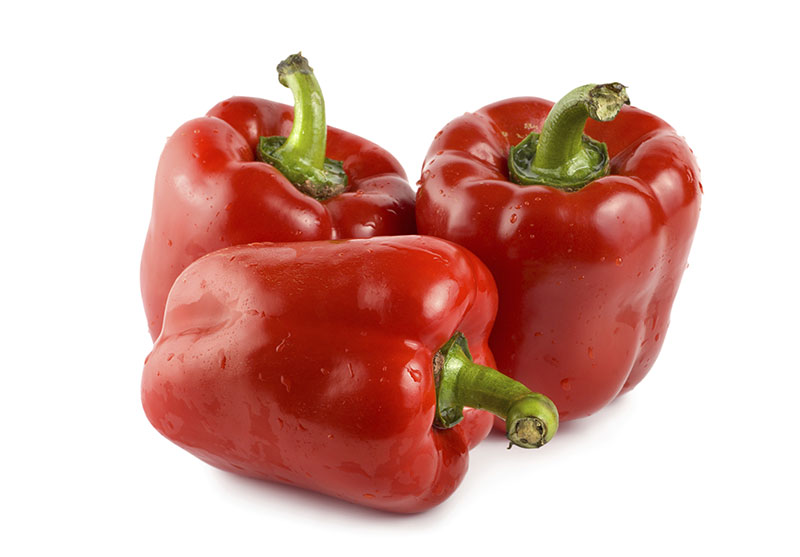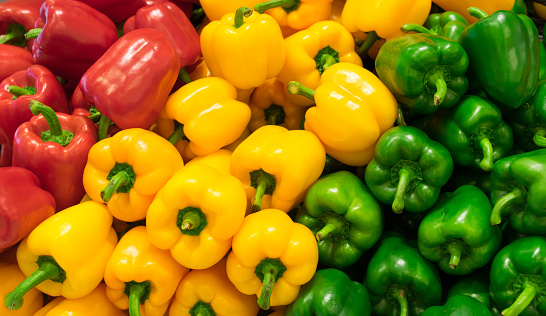Peppers, Red Bell

Availability:
Year-round
Availability:
| J | F | M | A | M | J | J | A | S | O | N | D |
Notice:
on demand
Receiving/Storage:
Receiving Information: Good quality sweet peppers should be firm, fresh-looking, and brightly colored. Avoid peppers that appear shriveled, dull-looking, or pitted. Storage/Handling: Pitting; decay; darkening of seeds are indications of chill injury. Bruising is mechanical damage caused by rough handling and can result in bruised product. For best quality, handle with care; do not drop shipping containers on the floor. Temperature/humidity recommendation for short-term storage of 7 days or less: 45-50 degrees F / 7 _ 10 degrees C. 85-95% relative humidity.
Description:
Sweet peppers are a fleshy-walled berry containing numerous whitish seeds in its inner cavity. The most popular variety is the bell peppers, which has four lobes and is somewhat square in shape. Certain varieties have three lobes, while others are more tapered in shape and have no lobes at all. Peppers date back to the year 1492, when Columbus and his explorers discovered sweet and hot peppers in the West Indies and took samples back to Europe. Peppers quickly became popular in Europe as a food, spice, and condiment. Twenty years later, travelers found bell pepper varieties growing throughout the West Indies, Central America, Mexico, Peru and Chili. Since then, peppers have been introduced to many other parts of the world including Africa and Asia. These mild mannered bell peppers register zero on the heat scale and are great to serve raw or cooked. They become sweeter and more flavorful when roasted.


